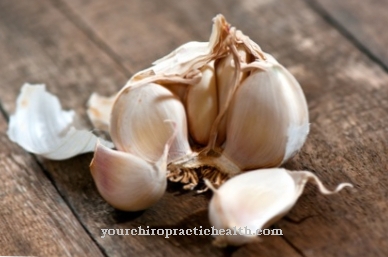Articain is a medicinal substance. It is assigned to the group of local anesthetics.
What is Articain?

Articain is a local anesthetic. Until 1984 the active ingredient was called Carticain. Another name is Articainum. The product was developed between 1969 and 1974 by the former Hoechst dye works.
The most common area of application of the substance is dentistry. Articain is used there to inhibit the transmission of stimuli, to block the sodium channels of the nerves and to switch off the perception of pain.
Pharmacological effect
The effect of Articain is based on a change in membrane permeability. When a stimulus is picked up and passed on, tiny electrical currents are generated in the nerve fiber. Various minerals such as potassium and sodium are released from the nerve cell via channels during this process. But they can also flow into the cell.
By giving Articaine, it is possible to block the channels that are responsible for the transport of sodium. In this way, the transmission of the stimulus is prevented. This in turn leads to the temporary elimination of the pain.
When applied superficially, Articain can only have a very low anesthetic effect. This is why the local anesthetic is injected. By doing this, the adjacent tissue at the injection site can be numbed. But the anesthesia of an entire nerve cord is also possible, provided that the injection takes place in its vicinity.
One of the greatest advantages of Articaine is its rapid numbing effect. This starts at intervals of 1 to 11 minutes, regardless of which application technology is used. In addition, Articain works reliably. The anesthetic lasts between 60 and 225 minutes. The length of action ready for intervention is between 20 and 75 minutes. If the doctor also uses preparations that inhibit blood circulation, the positive effect is prolonged because this counteracts the local anesthetic from being washed out.
Another advantage of Articaine is its good ability to penetrate the tissue of a bone. In addition, the anesthetic can be quickly removed from the body. It is inactivated by hydrolysis and a hydrophilic acid group is exposed.
Medical application & use
Articaine is given to numb nerves in specific parts of the body. Whole body areas can also be treated with the anesthetic. Since the patient does not feel any pain, this makes the treatment process much easier.
In most cases, Articaine is used in routine dental procedures to reduce pain during treatment. Since local anesthetics are mostly used in dentistry, the product is particularly suitable for this purpose.
Articaine can be administered into the skin, into a muscle, into the connective tissue or into the intestinal area. Intravenous injection is also possible. The anesthetic is metabolized both in the blood plasma and in the liver. The articaine is split into esterases. The plasma half-life averages 30 minutes.
Articain is generally considered to be well tolerated. So it is also suitable for the treatment of pregnant women.
You can find your medication here
➔ Medicines for painRisks & side effects
Despite the good tolerance of Articaine, annoying side effects are possible. In some cases, numbness, abnormal sensations as well as nausea and vomiting can occur. However, these symptoms do not always show up, as the reaction to medication varies from person to person.
Dizziness, allergic reactions such as inflammation and swelling, slow heartbeat and low blood pressure are rather rare after taking Articaine. In the worst case, even life-threatening shock or heart failure is conceivable.
A strict indication of Articaine is necessary for patients suffering from a cholinesterase deficiency. In such cases, the effect of the anesthetic may be prolonged or intensified. Even if there are severe liver or kidney dysfunction, bleeding disorders or epilepsy, special care must be taken during treatment.
The use of Articaine is not suitable in the case of severe low blood pressure, hypersensitivity to Articaine, severe disorders of the cardiac conduction system and acute cardiac insufficiency.













.jpg)

.jpg)
.jpg)











.jpg)